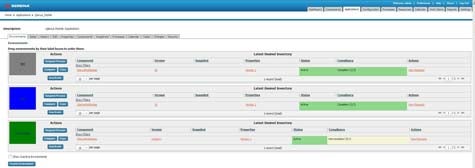When it comes to developing applications, the most strategic thing many organizations can do is to allow every member of the team assigned to developing and deploying an application to get out of each others’ way.
With that goal in mind, Serena Software today released an update to its application release management software that introduces a range of self-service capabilities in addition to support for Amazon EC2 and Microsoft Windows Azure cloud computing deployments.
According to David Hurwitz, senior vice president of worldwide marketing for Serena Software, with the rise of agile development, the number of application releases the average IT organization is trying to manage has increased exponentially. End users not only have an insatiable desire for updates to customer-facing applications, but they have come to expect those features to be added to any application on a continuous basis.
The challenge, say Hurwitz, is finding a way to allow developers to set and then tear down application development environments without having to invoke the manual assistance of the IT operations teams. With that goal in mind, Serena Software, in version 4.5 of its Orchestrated IT software, has added support for a self-service portal that allows developers to automatically spin up the IT resources they need for any given application development project.
In addition, Serena Software has added support for VMware and an ability to capture the costs of specific tasks and then link them to approved change requests as part of an effort to automate the financial management process associated with an application development project.
Not all applications are created equal in terms of business value. As such, every application from a release management perspective needs to be manage differently. In particular, Hurwitz says what Serena describes as revenue applications need to be managed differently than traditional employee-facing enterprise applications.
The issue that creates from a DevOps perspective is finding a way to automate the management of those applications that not only brings updates to market faster, but also does it in a way that doesn’t require a corresponding increase in the size of the IT operations team needed to continuously roll them out.



